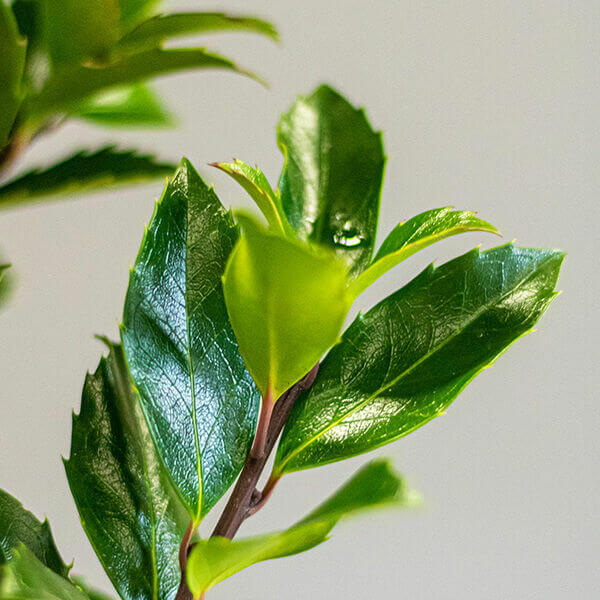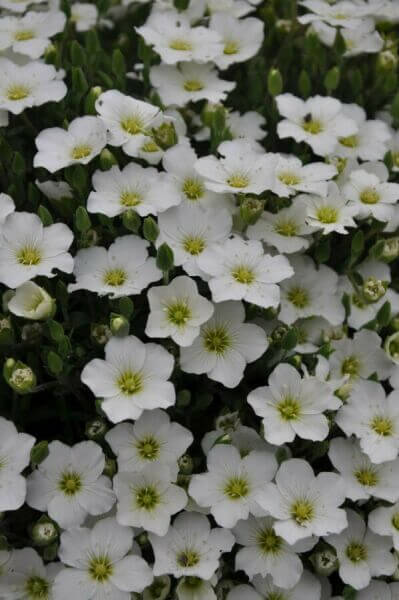Hedge Plants For Protecting Gardens
Hedge Plants For Protecting Gardens
Blog Article
Best Hedging Plants For Driveway Edges
Improve your garden's attraction with rich hedge varieties such as Yew (Taxus), Thuja, Laurel, Photinia, and Bamboo, commemorated for their structural integrity and ecological benefits.
Yew and Thuja offer evergreen coverage and winter strength, while Laurel offers fast growth and broad, aromatic leaves.
Photinia adds seasonal beauty with its lively red foliage, and Bamboo lends a low-maintenance, peaceful atmosphere.
These hedges improve air quality, minimize sound, and create tranquil, personal areas.
Proper planting, spacing, and upkeep make sure energetic growth and environmental consistency.
Check out how these lush varieties can elevate your garden's beauty and wellness.
Key Takeaways
Transform Your Garden With Lush Hedge Ranges
- Select Yew for its thick, evergreen growth and exceptional durability.
- Opt for Laurel for its fast growth and broad leaves, guaranteeing fast personal privacy.
- Pick Photinia for its vibrant seasonal foliage, which turns a striking dark red.
- Make use of Bamboo for a low-maintenance, winter-hardy hedge with aesthetic appeal.
- Space plants 2-3 per meter and prune regularly for ideal development and health.
Popular Hedge Plants
When changing a garden with lavish hedge ranges, it's important to consider popular hedge plants such as Yew, Thuja, Laurel, and Photinia due to their distinct qualities and benefits.
Yew (Taxus) is highly esteemed for its longevity and dense, green growth, making it a prime option for sustaining landscapes.
Thuja is kept in mind for its evergreen foliage and robust winter season strength.
Photinia includes seasonal vibrancy with red leaves that darken gradually, producing dynamic visual appeal.
Laurel uses quick development and aromatic, broad leaves, perfect for fast privacy.
Furthermore, Bamboo is an exceptional choice for ambiance, offering a low-maintenance, winter-hardy alternative that boosts the garden's aesthetic with its stylish, swaying canes.
These choices deal with a variety of horticultural needs and choices.
Advantages of Garden Hedges
Garden hedges provide a plethora of benefits, making them a valuable addition to any landscape. These natural barriers are cost-efficient to carry out and offer considerable wind protection, improving air circulation and adding to sound reduction. The thick foliage of hedges like Thuja and Beech guarantees privacy by blocking exposure, creating a tranquil and secluded environment.
Hedges also play an essential role in microclimate guideline, providing a steady environment that cultivates plant growth and lessens temperature level variations. Their detailed leaf structures filter toxins, enhancing air quality and adding to a much healthier garden ecosystem.
Moreover, hedges master noise reduction, absorbing and deflecting acoustic waves to lower ambient sound levels. This double performance of offering both visual and acoustic privacy enhances the overall harmony and visual appeal of any garden.
Planting and Upkeep Tips
For a successful hedge, meticulous preparation of the planting area is vital. Make sure the soil has appropriate pH and drainage to support strong root development.
Area the plants properly for the chosen types. Water the hedge regularly during its initial development phase, adjusting as needed with seasonal modifications.
Execute a systematic bug control and illness prevention strategy, utilizing organic or chemical treatments when essential. Routinely inspect for aphids, termites, and fungal infections.
Apply mulch to keep moisture and reduce weeds. Seasonal pruning promotes dense growth and air flow, important for plant health.
Following these standards will help you cultivate a lively, properly maintained hedge that enhances the appeal of your garden.
Spacing and Trimming Standards
Spacing and Cutting Guidelines
Proper spacing and trimming are essential for cultivating healthy, aesthetically appealing hedges. Adequate spacing guarantees each plant gets enough nutrients, light, and airflow.
Follow these guidelines for optimum hedge upkeep:
- Spacing: Position hedge plants 2-3 plants per meter to encourage robust growth.
- Pruning Techniques: Regular pruning is necessary for maintaining preferred hedge height and shape. Cut brand-new growth in summer and cut back older wood throughout winter season.
- Seasonal Care: Change cutting techniques and schedules according to seasonal requirements to guarantee plant health.
- Hedge Height: Routinely display and cut to preserve the preferred hedge height and attain uniform looks.
Complying with these actions will guarantee your hedge prospers, improving both the appeal and functionality of your garden.
Choosing the Right Hedge
Picking the Right Hedge
Choosing the appropriate hedge includes assessing aspects such as fully grown height, foliage density, and ecological resilience. Effective hedge plant choice requires comprehending each species' development qualities and site-specific adaptability.
For instance, Yew (Taxus) uses outstanding durability and dense growth, while Thuja is significant for its winter durability. Additionally, thinking about maintenance requirements is vital; fast-growing species like Laurel or Privet need regular cutting, whereas low-maintenance options like Bamboo or Ivy may be preferable for those looking for minimal maintenance.
Ecological elements such as soil type, light schedule, and moisture conditions must also direct the choice process. This cautious technique ensures the selected hedges will thrive, offering both functional and visual advantages to the garden landscape.
Delivery and Planting Recommendations
To guarantee your hedge plants flourish, they must be provided by specialized couriers and planted quickly upon arrival.
Follow these essential steps for effective planting:
- Soil Preparation: Improve the soil with organic matter to improve drain and nutrient material.
- Planting Depth: Create a trench twice the width and equal to the depth of the root ball.
- Watering Methods: Water completely after planting, keeping the soil regularly moist but not saturated.
- Mulching: Apply a layer of mulch to keep wetness and reduce weeds.
Consumer Assistance and Service
Offered the crucial role of timely assistance in horticultural pursuits, our client support team is offered 6 days a week through telephone, e-mail, and social networks to provide professional suggestions and promptly resolve any issues. Their devotion to fast action times makes sure consumer fulfillment by solving questions connected to plant health, optimum planting techniques, and upkeep schedules.

Action Time
-----------------
Telephone
Six days a week
Within 24 hr
This detailed assistance system, enhanced by a stellar 9.3/ 10 customer rating, highlights our commitment to improving the gardening experience for each client.
Often Asked Questions
For How Long Does It Take for Hedge Plants to Establish?
Hedge plants typically require one to three years to become fully established, with the exact duration varying by species and growing conditions.
Efficient care during this critical period is essential for robust development. Constant watering, alert weed control, and suitable fertilizer application are critical in promoting strong root development.
For example, fast-growing species like Laurel might develop faster, while slower-growing varieties such as Yew might take longer. Thorough upkeep accelerates the facility process, leading to thick and healthy hedges.
What Are the very best Hedge Plants for Personal Privacy?
The question of the very best hedge plants for personal privacy involves evaluating evergreen and deciduous choices.
Evergreen hedges like Thuja, Laurel, and Cypress provide year-round protection, ensuring continuous personal privacy.
In contrast, deciduous hedges such as Beech provide seasonal privacy, shedding leaves in cooler months.
Secret maintenance pointers for privacy hedges consist of routine trimming, fertilizing in spring, and appropriate spacing-- typically 2 to 3 plants per meter.
Furthermore, constant watering and diligent weed elimination are vital for promoting healthy, dense growth.
Can Hedge Plants Draw In Wildlife to My Garden?
Yes, hedge plants can bring in wildlife to your garden by providing vital advantages like shelter, food, and nesting websites, thereby improving local biodiversity. Yew, holly, and laurel are exceptional for bring in birds, while ivy supports a range of pests.
Nevertheless, it is very important to note that there are some drawbacks, such as increased maintenance to manage insects and routine maintenance. Carefully selecting and maintaining hedge varieties can help balance these benefits and drawbacks, eventually cultivating a sustainable and lively community in your garden.
Exist Any Flowering Hedge Plants Available?
Yes, there are flowering hedge plants offered that can enhance the beauty of your garden.
For example, Elaeagnus, likewise called Olive Willow, produces fragrant white flowers in the fall, adding a touch of elegance.
Photinia, another popular choice, showcases lively red leaves that grow into a rich green, creating a dynamic visual result throughout the seasons.
To ensure these plants flourish, it's important to practice appropriate pruning techniques and seasonal upkeep, such as cutting new development in the summertime and cutting back in the winter.
These procedures will help maintain the health and visual appeal of your flowering hedges.
How Do I Avoid Insects in My Hedge Plants?
To prevent bugs in hedge plants, utilize natural bug control techniques and maintain correct hedge care. Introduce beneficial pests like ladybugs, which take advantage of harmful insects, to create a well balanced environment.
Regularly check your hedges for check here signs of problem and immediately eliminate any affected parts to avoid the spread. Guarantee the health of your hedges by using balanced fertilizers and supplying adequate water.
Make use of mulching to retain soil wetness and proper spacing to decrease plant tension and promote robust development. These practices collectively assist in reducing bug issues and preserving a healthy hedge.
Conclusion
In essence, picking the right hedge ranges such as Yew, Thuja, and Laurel can change any garden into a tranquil haven. These plants supply year-round plant, enhance visual appeal, and deal useful benefits like noise decrease and wind defense.
Correct planting techniques, accurate spacing, consistent watering, and seasonal cutting are essential for optimal growth.
Trusted delivery services and expert client support make sure a smooth experience from purchase to planting, making it simpler than ever to elevate your outdoor space.
Garden hedges offer a wide variety of advantages, making them an important addition to any landscape. These natural barriers are cost-efficient to carry out and supply substantial wind defense, boosting air blood circulation and contributing to sound decrease. The thick foliage of hedges like Thuja and Beech guarantees personal privacy by blocking presence, developing a tranquil and remote environment.

Pruning Strategies: Regular pruning is vital for preserving desired hedge height and shape. Cut brand-new growth in summer and cut back older wood throughout winter.
Report this page